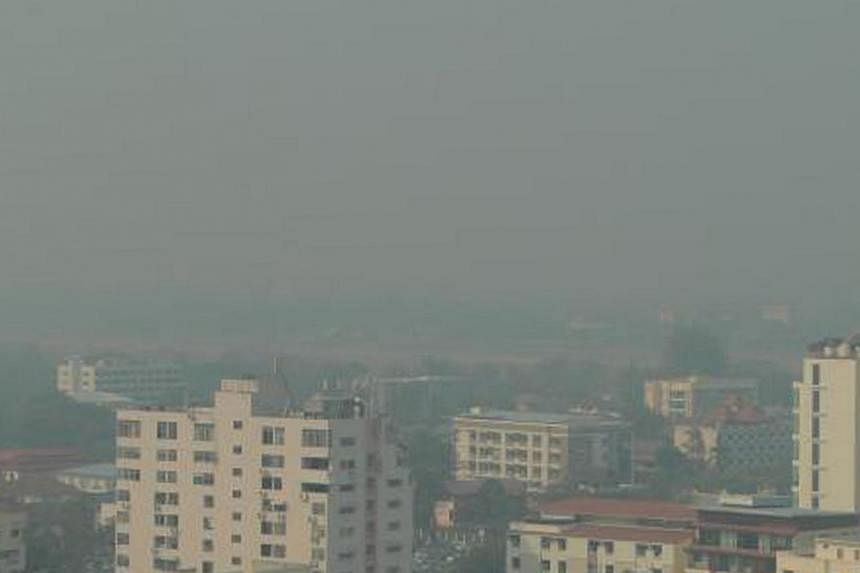Haze hit unhealthy levels in the northern Thai province of Chiang Mai yesterday as dry-season fires shroud the region in smoke.
It is an annual scourge in northern areas of the country from January to April as Thai farmers, as well as those in Laos, Myanmar and Cambodia, torch the land to clear scrub or agricultural waste.
The growth of contract farming has also exacerbated the problem.
During this period, Doi Suthep - Chiang Mai's landmark peak - can disappear from view while thousands of locals seek treatment for breathing ailments.
Yesterday, the Pollution Control Department's monitoring stations in Chiang Mai registered elevated 24-hour average readings of particulate matter of up to 10 microns in size (PM10).
At 2pm, there were up to 175 such particles per cubic metre of air, beyond Thailand's acceptable standard of 120 or the World Health Organisation's guideline of 50.
These unhealthy readings were also registered in the northern provinces of Lampang, Tak, Nan, Lamphun, Phayao and Mae Hong Son, which had the worst reading at 232.
Local media reported that Mae Hong Son ordered the closure of its airport yesterday due to poor visibility.
If weather conditions are unfavourable, the situation could worsen in the coming days, said Mr Jongklai Worapongsathorn, director of the Ministry of Natural Resources and Environment's Chiang Mai office.
"The big concern is the westerly wind blowing from Myanmar, which carries the haze across the border," he told The Straits Times.
"Satellite observation shows a lot of 'hot spots' within the country, and if the wind continues blowing in this direction, the situation could escalate within this week... The (PM10 reading) could be over 200 or even close to 300, like in recent years."
The Thai government has had little success with its attempts to control open burning and encourage agricultural waste to be ploughed into the soil instead of being burnt.
Fires are also causing haze in Sumatra's Riau province that is adjacent to Singapore, and are being worsened by a lack of rain over the past month.
Efforts are under way to fight fires in Bengkalis and Rokan Hilir districts in the province.
In Bengkalis, the number of hot spots declined to three yesterday from 15 in mid-February, according to Mr Herman, a villager and firefighting volunteer.
Regional wind patterns meant the haze was blowing towards the south-east, away from Singapore and Malaysia.
Mr M. Ali, secretary of Sepahat village in Bengkalis district, said sluice gates have been built in eight canals in the area to provide water to douse fires.
He praised the efforts of the military, police, Forestry Ministry officers and local volunteers.
"Fires emerge there, they move already. Very quick action."
Additional reporting by Wahyudi Soeriaatmadja in Jakarta


